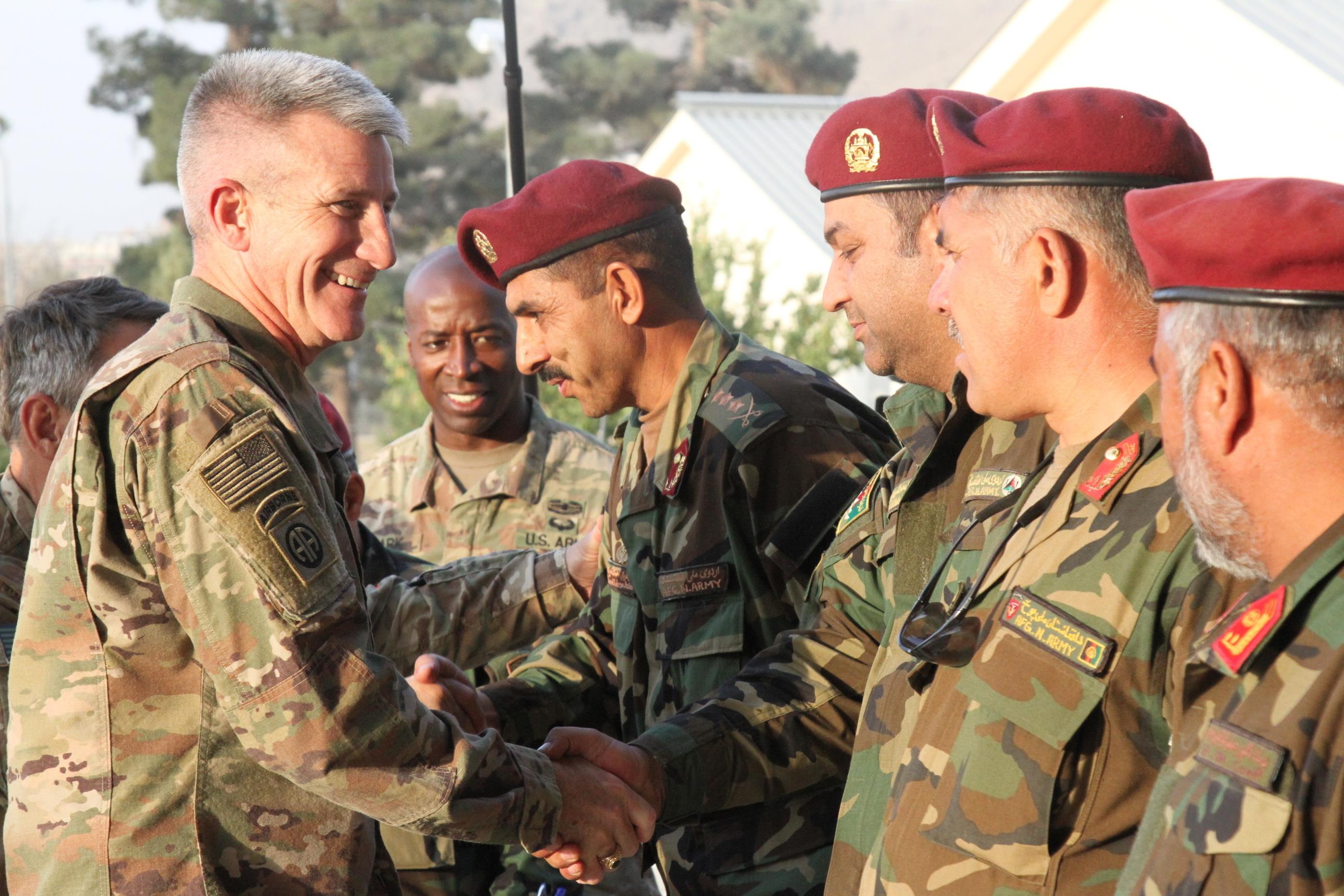WASHINGTON — With an increase in troops, the U.S. and NATO strategy in Afghanistan has a good chance of enabling Afghan security forces to do more to secure their country, the Resolute Support mission commander said during a news conference in Brussels during the week.
Army Gen. John W. Nicholson told reporters that Afghan forces have proven their mettle in the time of the greatest risk to the Afghan government.
“We fought most of the year … at the lowest level of capability that we’ve ever had in the 16 years [of the Afghan conflict],” Nicholson said. “It was the lowest level of capability and the highest level of risk we’ve faced in this time.”
Part of the problem is the NATO train and assist mission was not completely resourced. “We were only at an 80 percent fill on our combined joint statement of requirements,” he said.
4-Year Plan
The new strategy will help and it builds on the four-year plan from Afghan President Ashraf Ghani.
The plan calls for increasing the offensive capability of the Afghan military — specifically the commandos and air assets. Additional trainers will allow them to go on the offensive and provide security over a greater area of the country, the general said.
“This, coupled with pressure on the external enablers of the insurgency, as well as social pressure at the ballot box, with the elections over the next two years, is all designed to bring the Taliban to the table,” he said. “So this is a fight-and-talk approach.”
Nicholson emphasized that the new strategy is conditions-based and not on a set deadline. The modest increase in NATO, U.S. and partner forces will enable more training at lower echelons and focus air support where it is most needed.
New capabilities will join a force that continues to improve, the general said. Afghan security forces went on the offensive this year in ways that they previously haven’t, he noted. All six of the Afghan corps conducted offensive operations simultaneously. “We saw a decrease in casualties that occurred in September,” Nicholson said. “So, even though there was some very tough fighting, the enemy was unable to accomplish any of their objectives this year.”
Last year, there were eight Taliban attacks on cities around the country. This year, there was one. “Whenever the enemy attempted to mass, he was subjected to U.S. airpower and suffered heavy, heavy casualties — much higher than the Afghans,” he said.
Changes at the Top
Leadership played a large role in the successes, the general said, with Ghani replacing five of the six corps commanders at the beginning of the fighting season. “This lowered the average age of the core commanders by 10 years, and they came into their duties with more energy, frankly, and more offensive mindset, and it showed on the battlefield,” he said.
Nicholson ticked off the areas of success, including Helmand province, where Afghans working with the Marines of Task Force Southwest expanded the secure areas around Lashkar Gah and retook the Nawa district.
In the eastern part of the country, the 205th Corps was able to expand the security environment around Tarin Kot. There was also an expansion of security around Kunduz, the general said.
The gains were local, he said, “but they’re significant in the sense that … the Afghans were on the offensive.”
The successes caused the Taliban to change their strategy and the group launched suicide attacks against mostly civilian targets. “Even though they did attack some military installations and police installations, the majority of the casualties were civilian casualties,” Nicholson said.
“We end the year at roughly the same, in terms of population control, as we were at the beginning of the year,” he said. “However, they are going to be postured, going into 2018, to go on the offensive.”
And Afghan forces are primed. Through December, 1,900 new commandos will join existing units and the Afghan air force is receiving new aircraft. “We’re going to triple the Afghan Air Force and this is going to add to their offensive capability,” the general said.
The Afghan government is doing its part by passing laws aimed at combatting corruption that should result in a generational change amongst the leaders of the Afghan security forces, Nicholson said.
“The biometric enrollment of every soldier and every police officer in the Afghan security forces is ongoing. This will be complete by April,” the general said. In addition, audit teams will be allowed to go into the banking system and the Ministry of Finance to actually follow NATO and U.S. money as it enters the Afghan banking system. This will enable NATO forces to track the money from the point it enters the system to the biometrically enrolled soldier.






